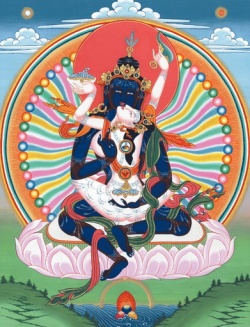Difference between revisions of "Shōtoku Taishi"
m (Text replacement - "Category:Japanese terminology" to "{{JapaneseTerminology}}") |
|||
| Line 9: | Line 9: | ||
[http://www.sgilibrary.org/search_dict.php www.sgilibrary.org] | [http://www.sgilibrary.org/search_dict.php www.sgilibrary.org] | ||
[[Category:Japanese Buddhist History]] | [[Category:Japanese Buddhist History]] | ||
| − | + | {{JapaneseTerminology}} | |
Latest revision as of 12:59, 27 April 2014
Shotoku, Prince
[聖徳太子] (574–622) ( Jpn Shotoku-taishi)
Also known as Prince Jogu. The second son of Japan's thirty-first emperor, Yomei, and the regent under the reign of Empress Suiko. He carried out numerous reforms and governed wisely in both domestic and international affairs. In 604 he promulgated the Seventeen-Article Constitution, whose second article stresses reverence for the three treasures of Buddhism. In order to enter into diplomatic relations with Sui-dynasty China, the prince appointed Ono no Imoko to head an embassy there, opening the way for the widespread introduction of Buddhism and other elements of Chinese culture to Japan. Shotoku had devout faith in Buddhism and contributed greatly to its establishment in Japan. He revered the Lotus, Shrimala, and Vimalakirti sutras, and is credited with having written commentaries on them. He founded Horyu-ji and Shitenno-ji temples.
